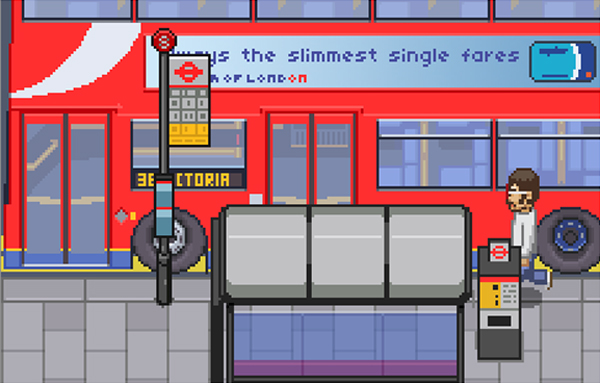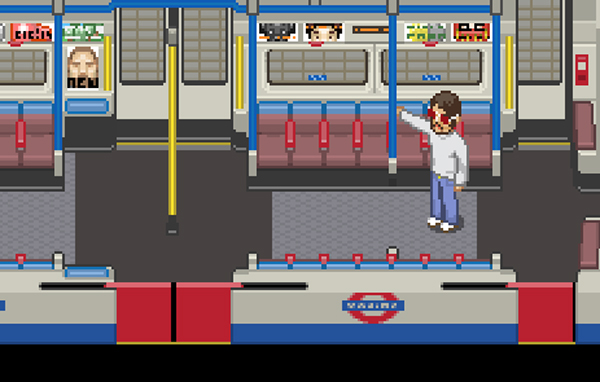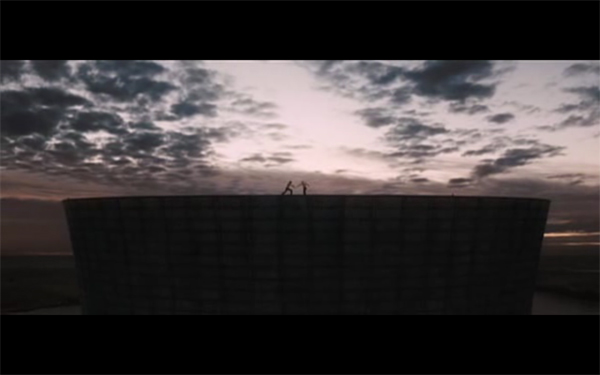Good Talk- Russell Davies
Points of interest: - People like things- they don't mind paying for an object (as opposed to web/ internet related stuff)
- A tacky figurine might be better than 1000 photo files on a cloud when it comes to recalling or remembering a holiday
- Screens aint all that
- People are amazed that internetty type data can become physical- especially personalised objects
- As old tech and practices change the infrastructure they used begin to become more accessible to the little guy (we've broken your business now we want your machines.)
Behind the Scenes at the Museum
 This is a fantastic set of documentaries by Richard Macer which looks at three ailing British Museums: The National Waterways Museum, The Freud Museum and the Commercial Vehicles Museum, under the pretense of looking at why they are failing and how they are trying to reconnect with the visiting public.
This is a fantastic set of documentaries by Richard Macer which looks at three ailing British Museums: The National Waterways Museum, The Freud Museum and the Commercial Vehicles Museum, under the pretense of looking at why they are failing and how they are trying to reconnect with the visiting public.
I firstly love this set of programmes because I love museums- I've got a real thing for them. I love the processes of collecting, accumulating, storage and display (as friends know only too well). I love the feel of them- the museums documented here are the sort of museum my childhood was filled with- wooden cases with curios and engines and stuff and I personally think there's little more British than Leyland Lorries and Canal Boats. There's a warmth and bored interest surrounding very specific information conveyed through plauqes and 'Authentic' surroundings.
So there were a few interesting bits and pieces about how the Museums faced a challenge in attracting new visitors without compromising the context and history of the space which the Museums inhabit- which are often the now disused housings of the exhibits at the museums- Boat sheds for the waterways, transport warehouses for the buses and lorrries, old mills for the Victorian industrial revolution that sort of thing. One poignant point from the now ex Director of the Waterways museum was that a few years ago visitors were visiting these places as there was a nostalgia for them. These visitors had canal boats and stuff when they were kids and so there was an interest in getting back to that. Now, however there was no such nostalgia. The canal boats were now an anachronism, and the museum's challenge was in making these almost alien artifacts relevant to an audience who felt no real affinity towards them.
All the documentaries though, happily veered off towards the people who were within the museums- those working and volunteering to keep the place running, and the relationships and politics between them. Whilst there were some traditonalists who were stuck in the 'olden days' the most interesting thing for me was seeing the passion and enthusiasm which the volunteers put into their respective tasks and the camaraderie they found through it. The Commercial Vehicles Museum had a particularly endearing character called Errol (pictured) who had been an employee at Leyland and now worked in the cafe at the museum- he heated up mushroom soup, morrisons beans, and buttered baps for ham sandwhichs. He was so happy- and the friendship between these, almost exclusively, old men was quite touching to watch.
I'm sure to most it sounds like a rubbish watch but I think it's an important, interesting bit of social, anthropological history which most people will be able to relate to. Check them out here until 3rd June: BBC Behind the Scenes at the Museum
Howard Grey and Me
So some of you know that I'm in the fortunate position to be helping out Howard Grey: the dad of my friend Camilla who I met at Moving Brands. He's a photographer with a lifetimes work and I'm helping him archive it all. So- lots of scanning, cataloguing, and eventually displaying his work. It ranges from historical journalism type stuff, to portraiture, to model shoots, to fashion, to advertising and corporate work- there's a massive breadth and amount of material and it's a real joy to be able to peruse and dig out gems from someones life's work. Every day is like a treasure hunt. I'm beginning the process of designing and creating a website and blog where you can view the sort-of-archive that it's becoming. (I say sort of because it acts as more of an edited reference for the physical collection/archive which is where high quality prints and scans would be taken from when the need arises.)

This is a nice one I dug out from today. It is from a shoot for the Association of Building Societies. The man shown is a carpet fitter and this was shot at the end of 1969. People that know me will understand that this man's style is what I aspire to, I have a bit of a thing for the Fred Dibnah look.
Hark! A Vagrant
I can't get enough of Kate Beaton's comics. Often short, often brilliant. Check them out here: harkavagrant.com Here a few of my favourites that I discovered recently.

Death Race and Desi-Fi
 I watched this film over the weekend- not exactly brain food but it's combination of guns, cars, metal and girls led by Jason Statham was exactly what I expected.
I watched this film over the weekend- not exactly brain food but it's combination of guns, cars, metal and girls led by Jason Statham was exactly what I expected.
But one thing I did like was the set up for the film. It provided a background story for how the context of the film came about. They started out with a piece fairly believable information and then started to extrapolate in a fairly logical way to get to an unbelievable conclusion which was then acted out through the rest of the film: Design Fiction. (as I see it) Here's what they said:
. 2012. The United States economy collapses . Unemployment hits a record high . Crime rates spiral out of control. The prison system reaches breaking point . Private corporation now run all correctional facilities for profit . Terminal Island penitentiary streams a series of cage fights live on the internet . Prisoners fight to the death creating a ratings sensation . They are the new Gladiators and Terminal Island is their coliseum . But like the mob of ancient Rome, the modern audience soon becomes bored . They demand more... . Death race is born




